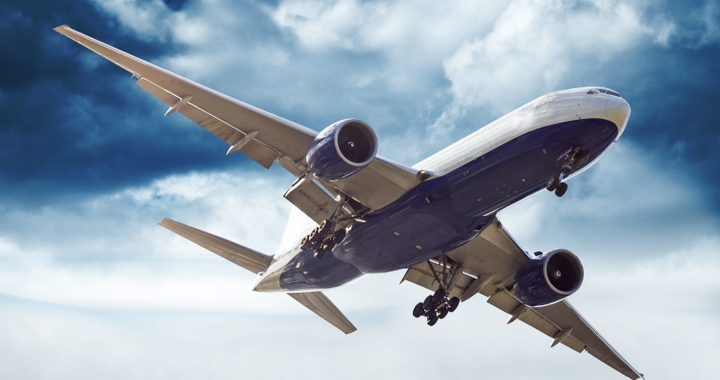Airway Bill for Freight
Before your cargo can take to the skies as air freight, there are many mandatory customs formalities to be observed. All exports and imports of commercial goods require a series of documents to accompany them.

Knowing which documents your consignment requires and the rules and regulations that apply to your goods is complicated. It’s an issue we have dealt with in some detail in a previous article about customs clearance.
One of the key documents you will require if you are shipping commodities as air freight is an airway bill. However, this one-page, legally-binding document doesn’t just satisfy the demands of customs clearance officials at airports of origin and arrival. An airway bill serves many more purposes, as we will illustrate in this article.
What is an Airway Bill?

An airway bill is a written contract between a shipper and a carrier. Amongst other things, it provides detailed information about the nature of the goods being shipped and a means by which the shipment can be tracked.
In the course of your dealings with shipping agents and freight forwarders, you may see or hear an airway bill referred to as:
- AWB
- Air Waybill
- Air consignment note
- Dispatch note
Rest assured, all these alternative names apply to the same document, which, for ease, we will refer to as an airway bill or AWB for the remainder of this article.
More Details About Airway Bills
To see an example of an airway bill, please visit our documents list page. It also includes samples of other paperwork your consignment is likely to need.
The key information that must be supplied on an airway bill includes:
- Shipper’s name and address
- Consignee’s name and address.
- 3-letter IATA code for the airport of origin
- 3-letter IATA code for the airport of arrival
- Description of the goods to be shipped
- The value of the shipment
- The number of items in the shipment
- Gross weight of the shipment
- Any special instructions. For example, are the goods perishable?
The AWB also describes the carrier’s terms, conditions, and liability limits. It details the procedures the shipper must follow to make a claim if their freight is lost or damaged during transit.
An airway bill is a legal document. The terms it contains are enforceable by commercial law, and it must accompany goods shipped as air freight.
Each airway bill has a unique, 11-digit number and can be used to track the whereabouts of the shipment. For the record, here’s what those numbers mean:
The first three digits relate to the airline transporting the cargo. The next seven digits are the airway bill’s serial number. The final digit is arrived at by dividing the serial number by seven and using the remainder. It’s known as the check digit.
Airway Bills Are Non-Negotiable. But What Does That Mean?
‘Non-negotiable’ is printed at the top of every airway bill. It means the AWB is a contract that covers the transportation of the goods and does not represent the value of the merchandise being shipped. It also means that an AWB does not mention the specific flight that will carry your freight to its destination, or the time your goods will reach your chosen airport of arrival.
Why is an Airway Bill so Important to Air Freight?

Airline Specific AWB: These bills are pre-populated with information about specific carriers, including their name, head office address, logo, and airway bill number. Neutral AWB: These follow the same format and layout as above but do not include the pre-populated data. Each airway bill is issued with eight color-coded copies to ensure each party involved in the shipment has the same documentation. The purposes of the different copies are as follows:
- Green copy – this is for the issuing carrier
- Pink copy—this is for the consignee
- Blue copy—this is for the shipper
- Brown copy—this acts as the proof of delivery receipt
5-8. White copies—purpose?
After the shipment is completed, the original copy of the airway bill is given to the shipper as evidence that the carrier has transported the goods. The document also proves that those goods have been received and accepted by the consignee.An airway bill is vital to all three parties involved in an air freight shipment: the sender of the goods, the airline responsible for transporting the freight, and the recipient of the consignment. That’s because the AWB plays the following important roles when shipping goods by air:
- It provides evidence that the airline has received the goods.
- It advises of the contact information for all the parties involved in the shipment.
- It is a contract of shipment between the shipper and the airline.
- It documents an accurate description of the goods, including weight, dimensions, and nature.
- It can be used by the shipper and consignee to track the progress of the goods.
- It supplies evidence that the goods have been received in good order.
- It can be used as a freight bill or invoice when supported by other documents.
- If a carrier is prepared to insure a shipment, the airway bill provides evidence of the nature of the goods to be insured.
Who Issues an Airway Bill?
Airway bills are designed and issued by the International Air Transport Association (IATA), the body responsible for setting and supporting the highest standards of airline security, safety, and efficiency across the world.
There are two types of AWB:
Electronic Airway Bills (e-AWB)
Paper copies of airway bills used to be mandatory, until the Electronic Airway Bill Resolution came into effect. This paved the way for airway bills to move online, bringing extra ease and speed to the shipping process. Now known as an e-AWB, these electronic bills are in common usage, evidenced by IATA’s announcement that e-AWBs would be the default format for airway bills from January 1st 2019.
How to Fill in an Airway Bill
The good news is, that your shipping agent or freight forwarder is the party responsible for completing the airway bill. You will still be required to provide a Shipper’s Letter of Instructions which gives your authorization for the freight forwarder to complete and sign your AWB on your behalf.
A forwarder will ensure your AWB is completed accurately, as accuracy is vital with all customs documentation. Any irregularities or incorrect entries on the form could render you, as the shipper, liable for any damage suffered by airlines or individuals.
If you are shipping freight without using the services of an agent, your carrier will fill in the AWB for you. Your only requirement is to sign the completed document. For the record, here’s an overview of the details your carrier or forwarder will require in order to complete an airway bill:
Shipper’s Details:
- Company Name
- Telephone Number
- Full Address of Business Head Office
- VAT or Tax ID
Recipient’s Details:
- Their name
- Their telephone number
- Their address (and delivery address if different)
- Their TAX ID code
Shipment Details:
- Description of the nature of the goods
- Number of packages
- Type of goods being shipped
- Value of the cargo
- Weight and dimensions of the freight
Billing Details:
- If the shipper is paying the carrier freight charges, their account number must be included
- If the receiver of the goods is paying, they will need to give their account number
For the AWB to be valid, it must have a date on it and a signature in both the carrier and shipper boxes. Without these signatures, the carrier could refuse to accept liability and the goods may not be covered by the terms and conditions laid out in the contract.
What Is the Difference Between an Airway Bill and a Bill of Lading?
A bill of lading is a document that relates to goods shipped as overland or sea freight. An airway bill relates to goods shipped by air. Another key difference is that airway bills are non-negotiable, so offer less protection than bills of lading.
A bill of lading is a document used to confirm the receipt of goods by the shipping company with an agreement to deliver the goods exclusively to the party referred to in the bill.
An AWB offers no such agreement. Instead, it serves as a receipt of goods by a carrier or agent that shows the location to which the goods should be delivered.
Airway Bills—An Air-Freight Essential
The multiple uses of an airway bill make it one of the most important air-freight documents for shippers, carriers, and recipients alike. Whether your freight forwarder or carrier fills it in, it’s vital the information is correct before you either permit the forwarder to sign it on your behalf, or you sign it yourself.


